TT bike vs road bike: understanding the differences
We delve into the various attributes that separate the time trial bike from the traditional road bike
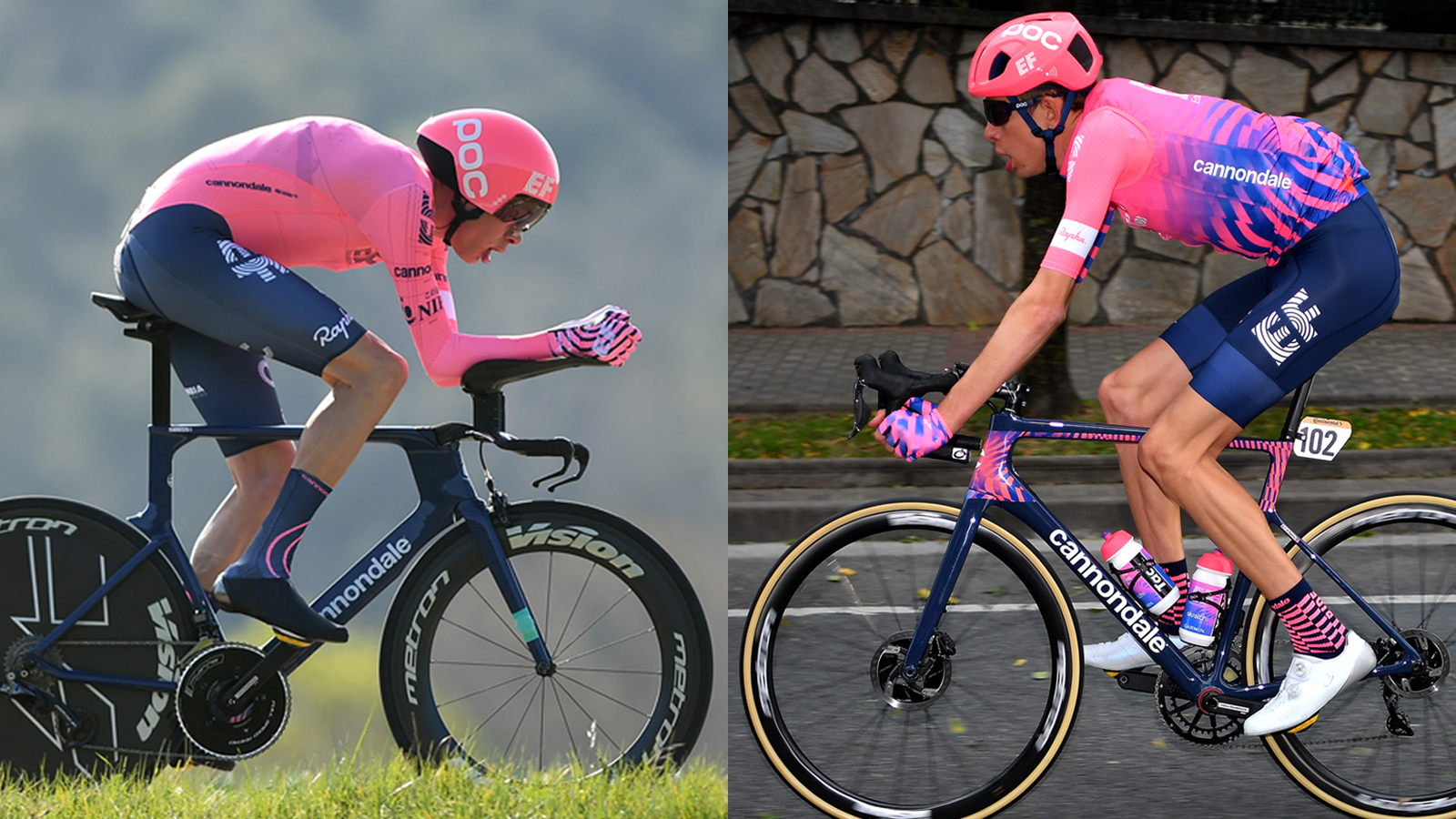
While road and time trial bikes technically fall under the same umbrella of ‘road bikes’, they could not be more different. To put things in automotive terms, a road bike is a bit like an F1 car, while a TT bikes is a straight-up dragster. Also, one can be used in a mass start event, and the other is strictly outlawed for safety reasons; they have a drastically different intended purpose and even call upon slightly different muscle groups to generate power.
TT bike vs road bike: What are they supposed to do?
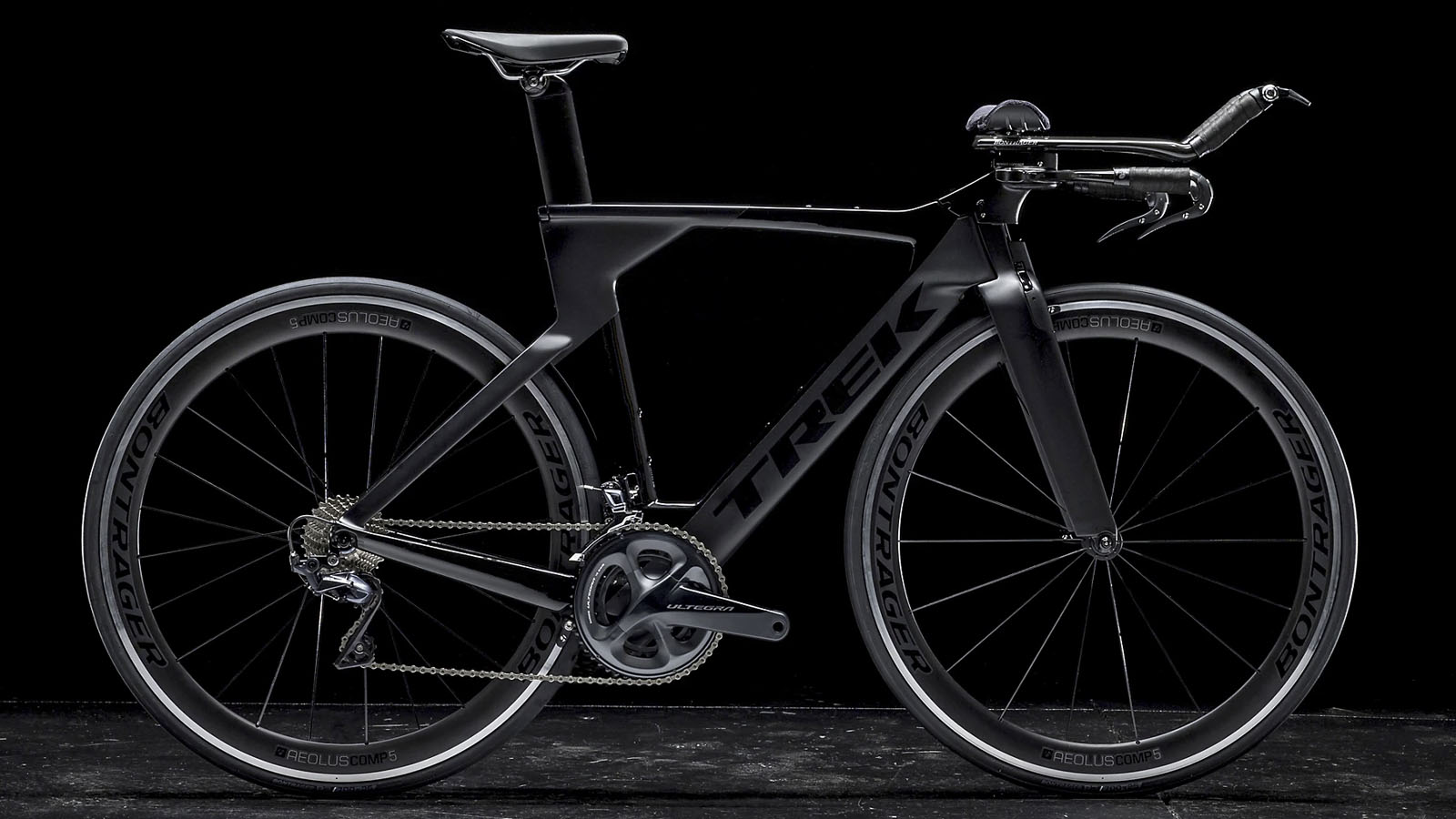
Time trial bikes have a laser-focused purpose, to slice through the wind with as little drag as possible. This comes at the cost of weight, handling, comfort and ease of adjustability and maintenance — and unless they have discs, the brakes are usually rubbish, too.
Using a base bar and extension, a time trail bike is designed for straight-line speed, pulling your chest out of the wind to make your body as compact as possible in the name of reducing drag.
Road bikes, on the other hand, have a much broader intended use. While we are seeing more road bikes incorporate some of the aerodynamic principles pioneered on TT rigs, bikes with drop bars are designed to be ridden in groups, up and over mountain passes, negotiate tight corners and maybe even some light gravel.
Wheels and tyres
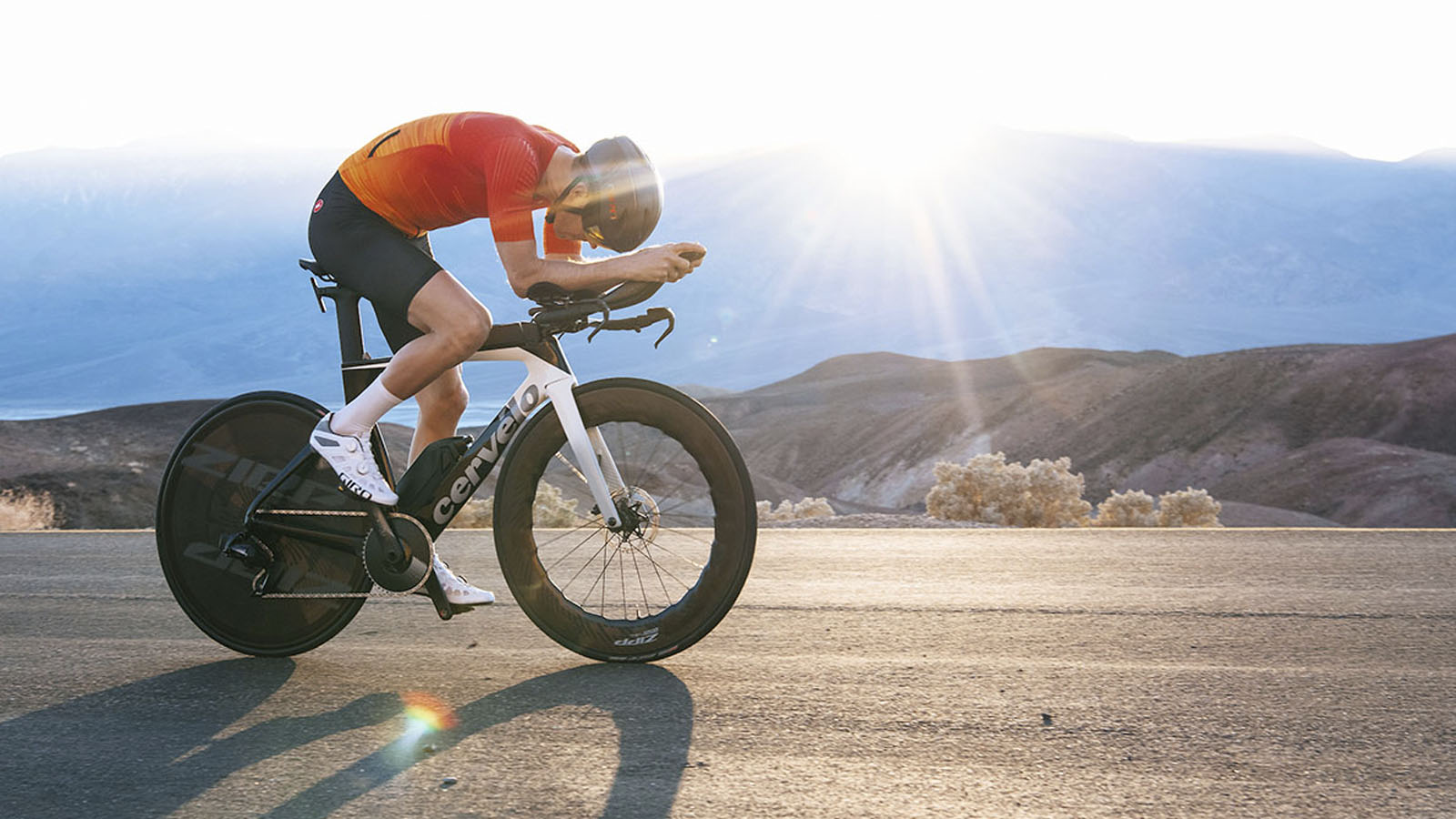
Road and time trial bikes can run the same wheels. Depending on whether the bike has rim or disc brakes, the frames will have the same hub spacing, use the same size rotors, and similar - if not the same - cassettes.
The real difference in the wheels you would run on a TT bike vs a road bike is rim depth. There are very few instances on a road bike where you would ever pop a disc-wheel between the chainstays; however, they are commonplace on time trail bikes.
Whereas it’s uncommon to see wheels deeper than around 65mm in the front of a road bike, 80mm rim or even tri-spoke wheels are a regular occurrence on time trial bikes.
The latest race content, interviews, features, reviews and expert buying guides, direct to your inbox!
NB: The dual meaning of the word 'disc' can cause confusion. A disc wheel is a solid wheel without spokes, usually found on the rear of time trial bikes. A disc brake wheel is any wheel that has been built to be used with disc brakes. A disc wheel designed for use with disc brakes is commonly referred to as a disc disc wheel.
Road and time trial tyres are technically the same; however, TT-specific tyres do exist, like the Schwalbe Pro-One TT; the difference being they ditch the breaker strip and use a lighter casing in search of less weight and rolling resistance.
While recreational road riders are gravitating towards 28mm and even wider tyres, you probably would find anything wider than a 25mm casing on a TT bike as most wheels nowadays are aero-optimized around that size casing.
Geometry
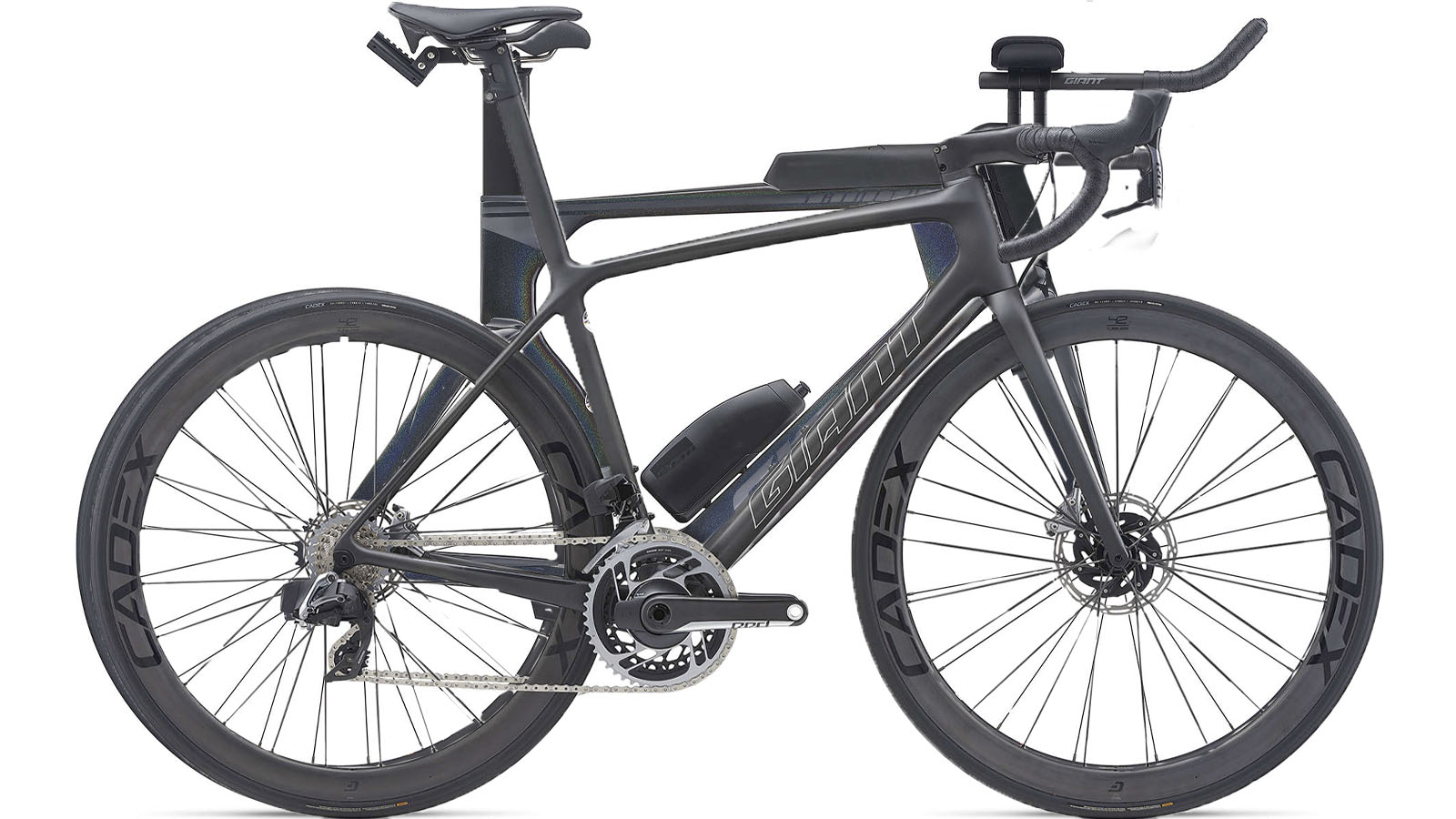
The geometry of road and time trial bikes are vastly different as they seek to achieve divergent body positions on the bike. With that, working out what size TT bike you may need is quite a bit more involved than road bikes and cannot be distilled to recommendations on top tube length based on height — rider height is only one variable, and limb length, torso length, and flexibility play a role in what size TT bike frame you should be on.
For a good starting point, we’d recommend looking at a TT frame that has a reach roughly 2cm shorter than your road bike, which typically means going down a size. This, of course, does not take into account the cockpit dimensions or any irregularities in your leg to torso length ratio.
Typically road bikes are dolled out based on top tube length, which serves as a pretty reliable indicator of whether a frame will fit someone. Of course, establishing your reach size is better but is not as important as it is to a TT frame.
- What size bike do I need? A comprehensive bike size guide
When it comes to the geometry itself, if we compare a Giant TCR to a Trinty both in size M, they have the same head angle, but the Trinty’s seat angle is 3.5 degrees steeper, has 4mm less bottom bracket drop, 1.8mm more trail, the head tube is 5mm shorter and the wheelbase is 23mm longer.
The TCR has a 550mm top tube, 388mm of reach and 545mm of stack, while the Trinity has a 541mm top tube, 417mm reach and 539mm stack. This means the front end of the TT bike is slightly lower (6mm) and a lot longer (29mm), so if everything else were equal, you'd be in a more stretched-out position.
However, with the steeper seat angle and shorter top tube, this rotates your entire body's position forward so that you are more directly above the bottom bracket, rather than behind it. Coupled with how your arms and hands interact with the base bar and extensions (instead of drop handlebars), your upper body is then rotated further, meaning your chest is mostly parallel to the ground, reducing your frontal area and thus making you more aerodynamic.
Position
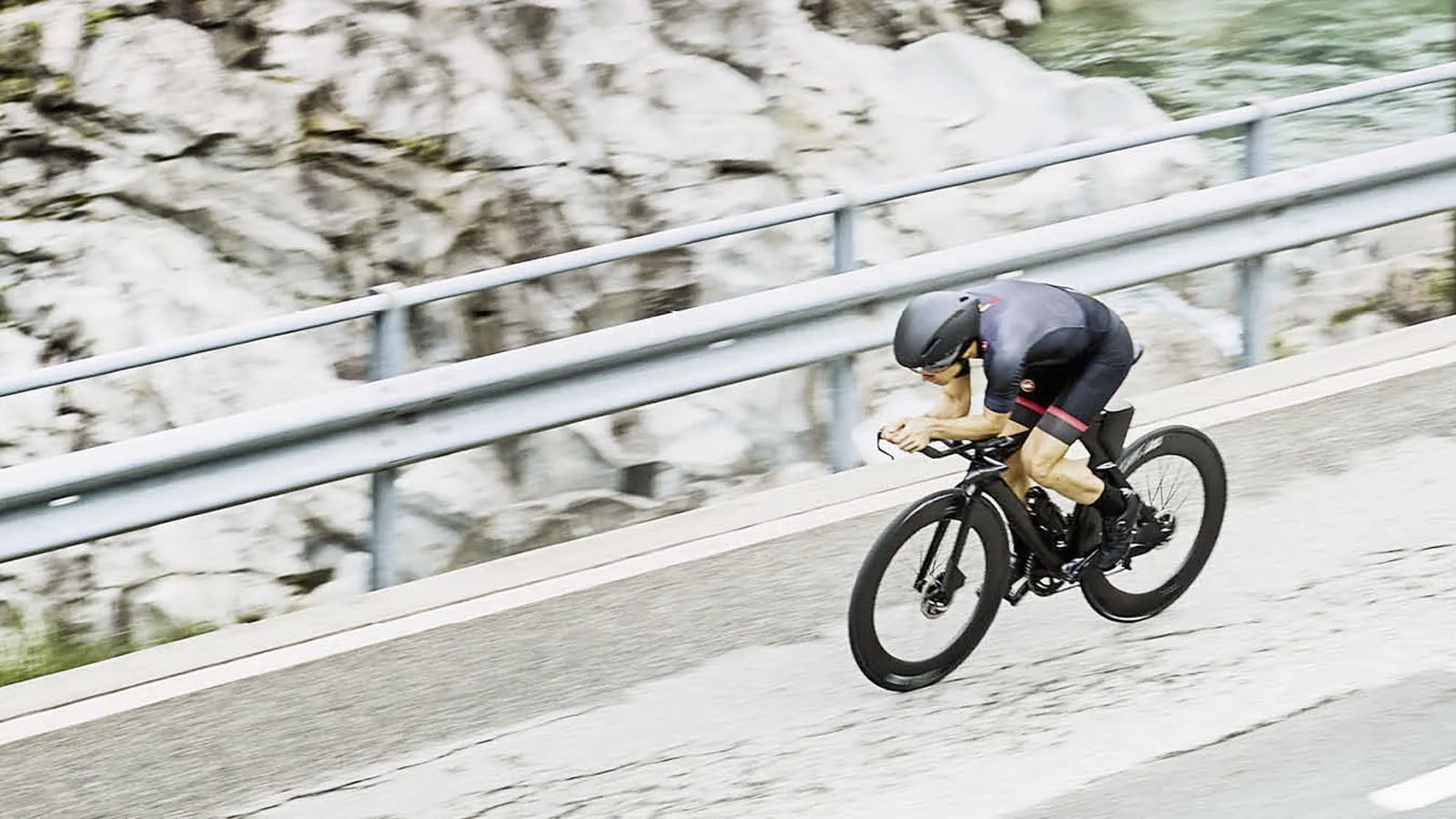
Even to the casual observer, the riding position on a time trial bike and a road bike is quite different. These body positions are so different that they call on slightly different muscle groups.
A study published in the European Journal of Sports Science in 2018 found significant variations in power output between rider’ upright and aero positions over TTs lasting three, five and 12 minutes.
Another 2015 study published in the Scandinavian Journal of Medicine and Science looked into the effect that the TT position had on muscle activation and crank torque. Researchers found that dropping the torso angle caused the gluteus maximus to contract significantly later in the pedal stroke, and for a shorter duration. This lead to a 2-3-per cent reduction in power output.
On a time trial bike, there are two hand positions, on the base bars or on the extensions. The base bars are where the brakes are located and are usually where the rider will place their hands while cornering, as it’s difficult to create leverage over the front wheel on the extensions.
With arms on the forearm pads and hands on the extensions, the rider’s body will be hunched over, vastly reducing the surface area that is exposed to the wind. It’s here a time trialist hopes to spend the majority of the time during an event, hence why the main shifters are located at the ends of the extensions — though, with electronic drivetrains, satellite shifters can be added to the base bars too.
On a road bike, there are three hand positions, the tops, hoods and drops. In previous years, riders have also been able to drape their hands over the tops and adopt a TT position; however, the UCI has put the kibosh on that from 2021 onwards.
The drops and hoods allow a rider to get their weight over the front wheel for control and bend at the elbows to adopt an aero position, where the brakes and shifters are accessible. The tops are more or less for cruising along, and from here, the brakes and shifters are out of reach.
Drivetrain and brakes
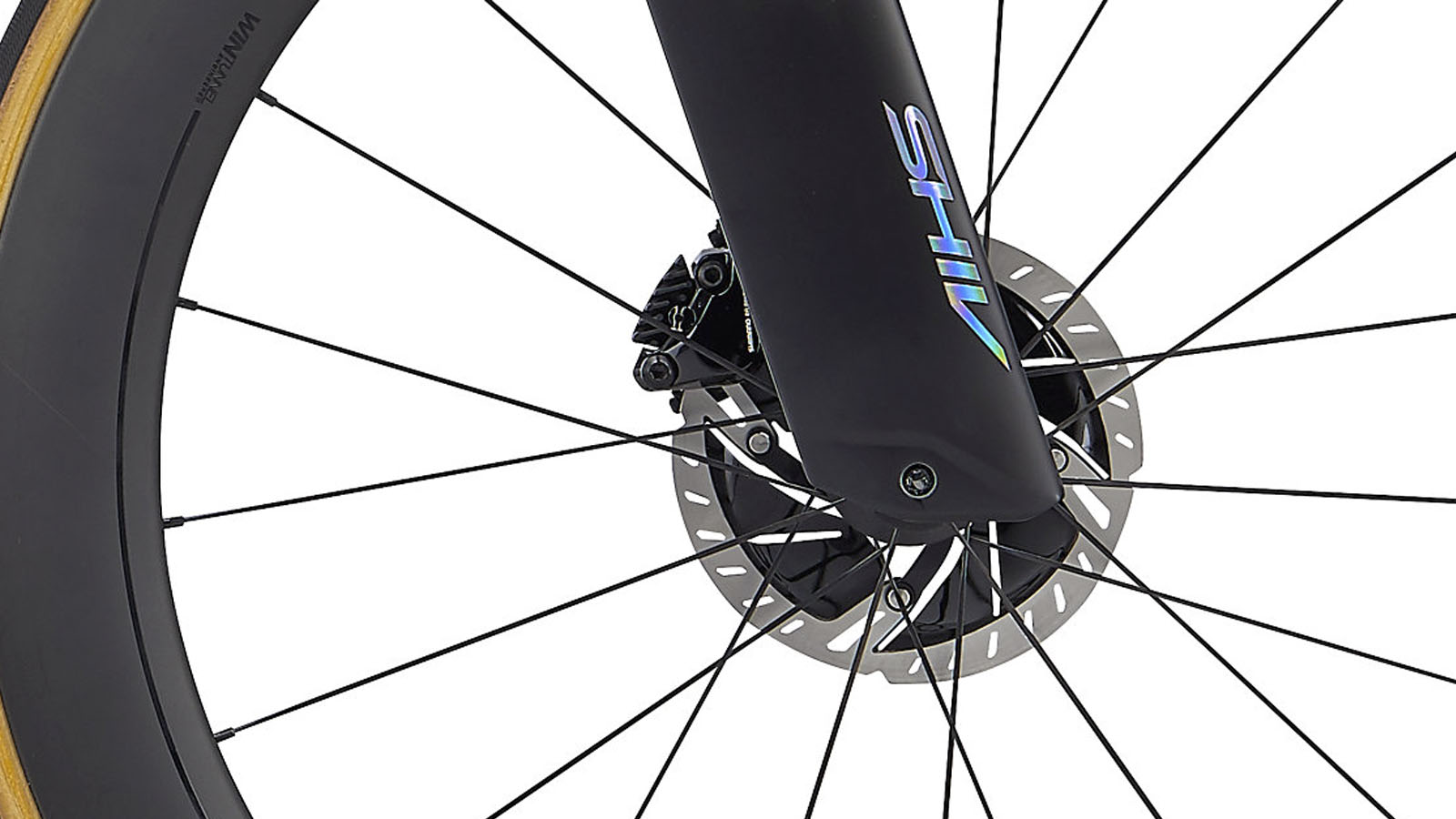
While TT bikes will have specific shifters, the derailleurs are the same as you’d find on a road bike. Though the gearing ratios will be a bit different.
If using a 2x system (two chainrings at the cranks), there will be plenty of riders that will run the standard 11-28T cassettes commonly found on their road bikes, though some will opt for 11-25 or even 11-23 to reduce the size of the steps between each cog. On the front, riders will go bigger than the 53/39T combo that has become so popular and we’ve seen some pros go as big as 60t so they don’t spin out at the higher speeds achievable in a time trial.
However, some TT riders are opting for 1x systems, as it removes the front derailleur, which in theory should reduce drag and eliminates the possibility of dropped chains. With a wide range of cassettes readily available, you can achieve the same range as 2x, but the steps between each gear are bigger. That said, on a course where you wouldn’t be using the little ring in the first place, there aren’t many downsides to a 1x system.
When it comes to brakes on time trial bikes, they are available in both rim and disc brake varieties, the same as road bikes. However, rim brakes on rime trial bikes are typically some sort of integrated proprietary unit designed not to add any drag, which often comes at the cost of power and modulation. To put it bluntly, they are usually terrible.
While the addition of disc brakes to time trial bikes has provided as much if not more controversy than road bikes, they will actually slow you down, and aerodynamicists are getting pretty good at nullifying any additional drag a disc calliper may have caused.
Cockpit
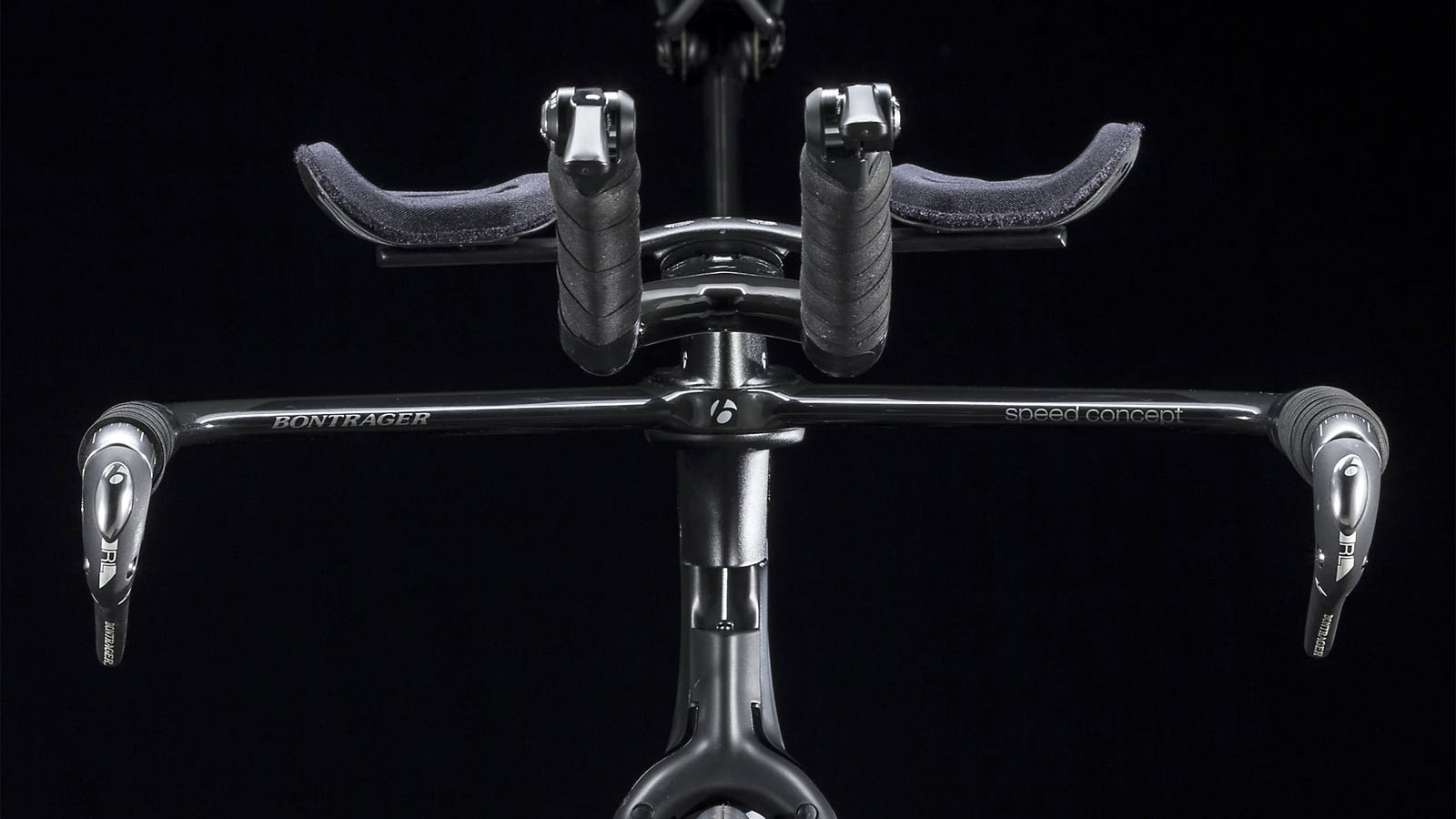
Time trial and road cockpits could not be more different from one another. If you’re reading this, you probably know what road bike handlebars look like, so we're not going to go into too much detail on that.
TT bars are made up of two distinct sections, the base bars, and the pads and extensions. The base bars are where the brake levers are located, and usually, measure 40cm across regardless of bike and rider size. Riders will grab the base bar when they are negotiating corners, and turning from the extensions is difficult -possibly even dangerous depending on the corner.
Outfront are the handlebar extensions (commonly known as 'aero bars', but sometimes also 'skis') which will also house the shifters and just above the base bars are the padded forearm rests, which support the rider’s weight when they are tucked.
For those looking to add this TT extension to their road bike, clip-on aero bars provide a solution, essentially adding this top section onto the tops of a set of normal road drop bars.
While the bullhorns are more or less fixed, the pads and extension are both adjustable and play a big role in how the rider sits on the bike. Riders will spend countless hours moving their pads and extensions a few millimetres at a time in search of that goldilocks position they can maintain for an extended period while also producing power. Adjusting a TT cockpit is also quite an involved process, and something as simple as adding a headset spacer can take half an hour or more.
At the highest level, we are beginning to see some riders with 3D printed aero bars that integrate perfectly into their position and are faster in the wind tunnel than your standard pad and extension setup — they also cost as much as a mid-level TT bike.
Based on the Gold Coast of Australia, Colin has written tech content for cycling publication for a decade. With hundreds of buyer's guides, reviews and how-tos published in Bike Radar, Cyclingnews, Bike Perfect and Cycling Weekly, as well as in numerous publications dedicated to his other passion, skiing.
Colin was a key contributor to Cyclingnews between 2019 and 2021, during which time he helped build the site's tech coverage from the ground up. Nowadays he works full-time as the news and content editor of Flow MTB magazine.
